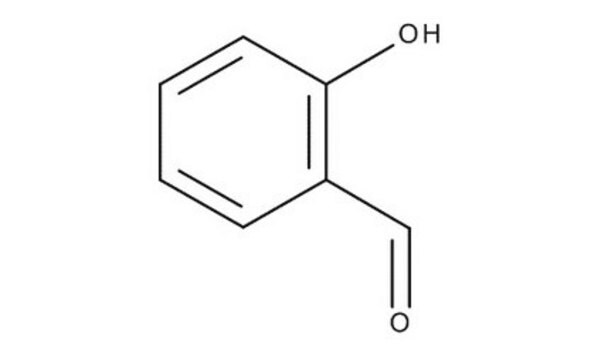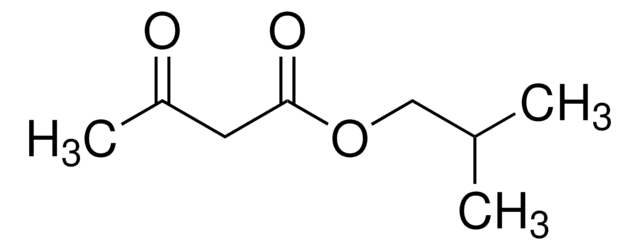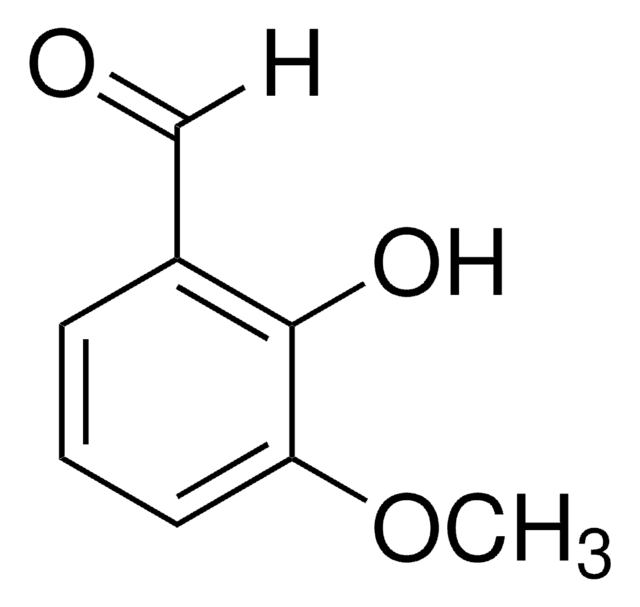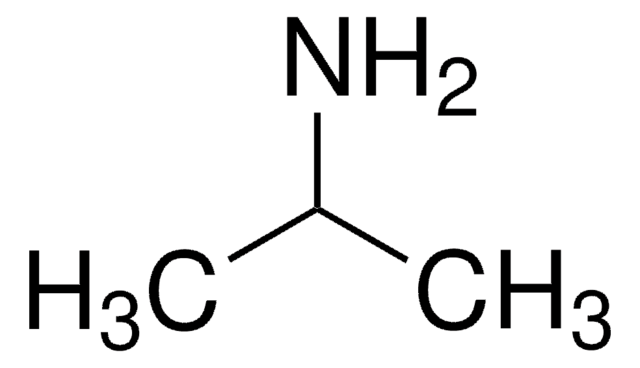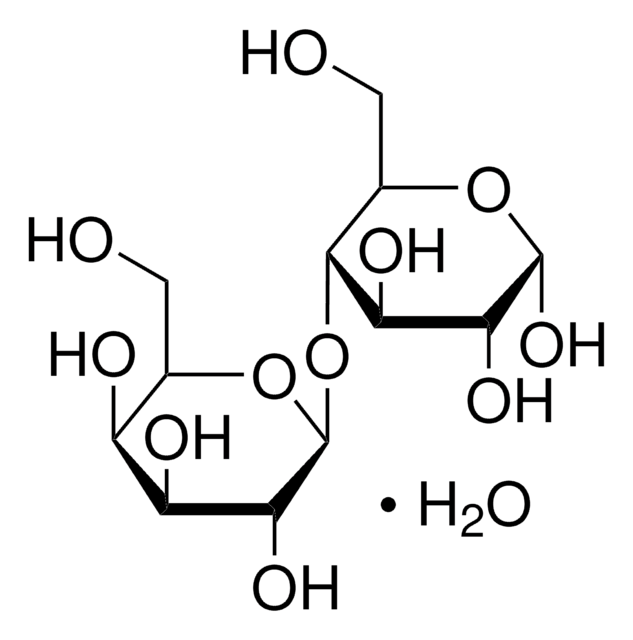W300403
Salicylaldehyde
≥98%, FG
Synonym(s):
2-Hydroxybenzaldehyde
About This Item
Fragrance grade
Halal
Kosher
Recommended Products
biological source
synthetic
Quality Level
grade
FG
Fragrance grade
Halal
Kosher
Agency
follows IFRA guidelines
meets purity specifications of JECFA
reg. compliance
EU Regulation 1223/2009
EU Regulation 1334/2008 & 872/2012
FDA 21 CFR 172.515
vapor density
4.2 (vs air)
vapor pressure
1 mmHg ( 33 °C)
Assay
≥98%
refractive index
n20/D 1.573 (lit.)
bp
197 °C (lit.)
mp
1-2 °C (lit.)
density
1.146 g/mL at 25 °C (lit.)
application(s)
flavors and fragrances
Documentation
see Safety & Documentation for available documents
food allergen
no known allergens
fragrance allergen
salicylaldehyde
Organoleptic
medicinal; cooling; spicy
SMILES string
Oc1ccccc1C=O
InChI
1S/C7H6O2/c8-5-6-3-1-2-4-7(6)9/h1-5,9H
InChI key
SMQUZDBALVYZAC-UHFFFAOYSA-N
Looking for similar products? Visit Product Comparison Guide
General description
Application
- Facile synthesis of iminated lignin for enhanced free radical and lead ion scavenging capabilities.: This study presents a novel method for synthesizing iminated lignin using salicylaldehyde. The modified lignin demonstrates significantly improved free radical and lead ion scavenging abilities, highlighting its potential application in environmental remediation and biochemical processes (Xia et al., 2024).
Signal Word
Warning
Hazard Statements
Precautionary Statements
Hazard Classifications
Acute Tox. 4 Oral - Aquatic Chronic 2
Storage Class Code
10 - Combustible liquids
WGK
WGK 2
Flash Point(F)
170.6 °F - closed cup
Flash Point(C)
77 °C - closed cup
Regulatory Listings
Regulatory Listings are mainly provided for chemical products. Only limited information can be provided here for non-chemical products. No entry means none of the components are listed. It is the user’s obligation to ensure the safe and legal use of the product.
FSL
Group 4: Flammable liquids
Type 3 petroleums
Hazardous rank III
Water insoluble liquid
ISHL Indicated Name
Substances Subject to be Indicated Names
ISHL Notified Names
Substances Subject to be Notified Names
JAN Code
W300403-VAR-K:
W300403-10KG:
W300403-10KG-K:4548173974620
W300403-25KG:
W300403-SAMPLE:
W300403-SAMPLE-K:
W300403-1KG:
W300403-1KG-K:4548173974637
W300403-25KG-K:4548173974644
W300403-BULK-K:
Choose from one of the most recent versions:
Already Own This Product?
Find documentation for the products that you have recently purchased in the Document Library.
Customers Also Viewed
Our team of scientists has experience in all areas of research including Life Science, Material Science, Chemical Synthesis, Chromatography, Analytical and many others.
Contact Technical Service
